Are there American-trained doctors in Chapala and Ajijic, Mexico?
Thomas Hellyer - Chapala Home Sales
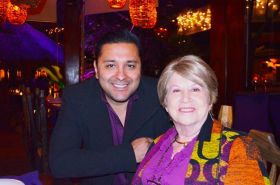 Most of the doctors in Chapala and Ajijic did most of their training in Guadalajara, which is about 45 minutes away, and there are some American doctors here who have had training and worked in the States, but in order to practice here they have to have a Mexican degree. They have to do an internship here; otherwise, they cannot legally practice here in Mexico.
Most of the doctors in Chapala and Ajijic did most of their training in Guadalajara, which is about 45 minutes away, and there are some American doctors here who have had training and worked in the States, but in order to practice here they have to have a Mexican degree. They have to do an internship here; otherwise, they cannot legally practice here in Mexico.Most Mexican doctors go to the States periodically for ongoing training. The medical schools in Guadalajara teach in...
 Most of the doctors in Chapala and Ajijic did most of their training in Guadalajara, which is about 45 minutes away, and there are some American doctors here who have had training and worked in the States, but in order to practice here they have to have a Mexican degree. They have to do an internship here; otherwise, they cannot legally practice here in Mexico.
Most of the doctors in Chapala and Ajijic did most of their training in Guadalajara, which is about 45 minutes away, and there are some American doctors here who have had training and worked in the States, but in order to practice here they have to have a Mexican degree. They have to do an internship here; otherwise, they cannot legally practice here in Mexico.Most Mexican doctors go to the States periodically for ongoing training. The medical schools in Guadalajara teach in English because that is the language used to explain the most up to date information.
All the doctors who speak English go to Houston or to California for their ongoing education, which most of them do on a regular basis, especially the ones who are working here with foreigners. There is one doctor in particular, Doctor Santiago, who is from Chicago, but did his medical education in Jalisco. Then he went back to the States and practiced medicine for a number of years and decided to relocate down here in Chapala. So he is an American who speaks both Spanish and English and who got his medical degree in Jalisco, so he is a legal doctor in Mexico. He is also a legal doctor in the States. There are a number of doctors who have the skills of Doctor Santiago who are practicing here in Chapala.
(American- trained doctor, Dr. Santiago Hernandez at the MEXPAT mixer, Chapala Mexico, pictured.)
Posted January 31, 2016
Mark O'Neill
 There are some America-trained doctors in Chapala and Ajijic. As an example, my doctor is from Guadalajara, which is considered one of the top medical centers of all of Mexico and Central America. The training of the doctors there is comparable to the US. My personal doctor had some training in Guadalajara and some training in the United States.
There are some America-trained doctors in Chapala and Ajijic. As an example, my doctor is from Guadalajara, which is considered one of the top medical centers of all of Mexico and Central America. The training of the doctors there is comparable to the US. My personal doctor had some training in Guadalajara and some training in the United States. They have a whole different outlook in the medical system in Mexico in that that they are focused on the...
 There are some America-trained doctors in Chapala and Ajijic. As an example, my doctor is from Guadalajara, which is considered one of the top medical centers of all of Mexico and Central America. The training of the doctors there is comparable to the US. My personal doctor had some training in Guadalajara and some training in the United States.
There are some America-trained doctors in Chapala and Ajijic. As an example, my doctor is from Guadalajara, which is considered one of the top medical centers of all of Mexico and Central America. The training of the doctors there is comparable to the US. My personal doctor had some training in Guadalajara and some training in the United States. They have a whole different outlook in the medical system in Mexico in that that they are focused on the client’s recovery and not in perpetuating the illness. The cost of healthcare in Mexico is anywhere from 70% to 90% less than it is in the United States.
The village of Ajijic acts as a hub where people from the US come down for dental or cosmetic and other surgeries and then return to the US, which saves them huge amounts of money, while receiving very high quality work.
I’m not at all, in any way, shape, or form, concerned to be living in Ajijic and using the healthcare system. The doctors in Ajijic are very competent and experienced people. If you have something major, it can be done.
There is a level of personal care in Ajijic. I read recently about a couple that went down to Ajijic wherein the man had some emergencies, which was the scary part. Day to day things that are planned are one thing but emergencies are things that require specific consideration. This couple went to Chapala, which is the closest town to Ajijic and where they have a medical facility in which they were able to address him even on a late-night hour. They took care of him and he was in there for three or four nights. The doctor came to his house once a day for the next week afterwards. Even after he recovered, the doctor was still in personal contact with this man to follow up for some heart problems that the man had experienced unexpectedly.
(Logo for Hospital Clinica Ajijic, Ajijic, Mexico, pictured.)
Posted July 15, 2016
Amaranta Santos - Eager y Asociados
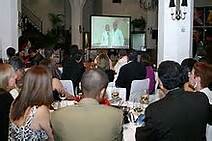 Yes, there are American-trained doctors here in Chapala and Ajijic. There are certified and trained doctors here who have had special certifications in the United States. You can find them both in Chapala and Ajijic, and you could find a gazillion of them in Guadalajara, which is the second largest city in Mexico, located about an hour away from Ajijic by car.
Yes, there are American-trained doctors here in Chapala and Ajijic. There are certified and trained doctors here who have had special certifications in the United States. You can find them both in Chapala and Ajijic, and you could find a gazillion of them in Guadalajara, which is the second largest city in Mexico, located about an hour away from Ajijic by car. Guadalajara provides major healthcare. People go there for hospitalization, surgeries, and needs...
 Yes, there are American-trained doctors here in Chapala and Ajijic. There are certified and trained doctors here who have had special certifications in the United States. You can find them both in Chapala and Ajijic, and you could find a gazillion of them in Guadalajara, which is the second largest city in Mexico, located about an hour away from Ajijic by car.
Yes, there are American-trained doctors here in Chapala and Ajijic. There are certified and trained doctors here who have had special certifications in the United States. You can find them both in Chapala and Ajijic, and you could find a gazillion of them in Guadalajara, which is the second largest city in Mexico, located about an hour away from Ajijic by car. Guadalajara provides major healthcare. People go there for hospitalization, surgeries, and needs that require larger hospitals with specialized equipment.
Many people like going to Guadalajara to have programmed (non-emergency) surgery, such as plastic surgery, knee replacements, hip replacements, etc. Healthcare here in Mexico is also cheaper than in the US and in many other countries.
Mexico is very strict with medical certification. Many people from South America come to Mexico to get their medical degree because medical education in Mexico is highly respected. The medical education here has high standards so those who want to be doctors do not have to go the United States to get their degrees.
(Medical conference in Guadalajara, Mexico, pictured.)
Posted August 18, 2016
Michael Kavanaugh - Continental Realty
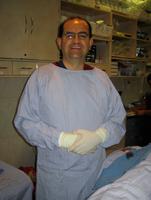 Yes, there are American-trained doctors in Chapala and Ajijic. There’s a dentist in Riberas del Pilar (just east of Ajijic about 10 minutes by car, towards Chapala) who is US-trained. The eye doctor that I used for my cataract surgery is trained both in Mexico and the US. There are good many doctors who have US backgrounds, if not in school then in residencies in the US.
Yes, there are American-trained doctors in Chapala and Ajijic. There’s a dentist in Riberas del Pilar (just east of Ajijic about 10 minutes by car, towards Chapala) who is US-trained. The eye doctor that I used for my cataract surgery is trained both in Mexico and the US. There are good many doctors who have US backgrounds, if not in school then in residencies in the US. Personally, I’m not concerned if my doctor is US-trained. The...
 Yes, there are American-trained doctors in Chapala and Ajijic. There’s a dentist in Riberas del Pilar (just east of Ajijic about 10 minutes by car, towards Chapala) who is US-trained. The eye doctor that I used for my cataract surgery is trained both in Mexico and the US. There are good many doctors who have US backgrounds, if not in school then in residencies in the US.
Yes, there are American-trained doctors in Chapala and Ajijic. There’s a dentist in Riberas del Pilar (just east of Ajijic about 10 minutes by car, towards Chapala) who is US-trained. The eye doctor that I used for my cataract surgery is trained both in Mexico and the US. There are good many doctors who have US backgrounds, if not in school then in residencies in the US. Personally, I’m not concerned if my doctor is US-trained. The medical training here, particularly in Guadalajara (about an hour from Ajijic) is fabulous. They are up on the latest medical care technologies. I just don’t worry about it. You can get recommendations from people who have all used these doctors and if somebody has a bad experience, they’ll tell you. If they had a fabulous experience, they will tell you.
There are several fabulous cardiologists in Guadalajara, including Dr. Nájar, who is at Hospital Bernardette. Here’s a story that absolutely appalled my physicians in Tuscaloosa. My wife’s brother passed away suddenly of a heart attack about 6 years ago. He was 64 years old, the figure of good health. He just came back from a run one day, sat down in an easy chair, and was gone. After this experience, when my wife and I came back to Mexico she thought it probably would be smart to have a stress test. So our local Ajijic doctor, Dr. Leon, arranged with Dr. Nájar for my wife to come up and have a stress test. Our appointment was at 10:30, right in Centro Guadalajara. When we got there at 10:30, we were told that Dr. Nájar had been called away on an emergency. His nurse said he was sorry but if we wanted to have the test done, we would have to back around 1 o’clock. We said, “No problem. We’ll go sightseeing. It’s fine.”
When we got back at 1 o’clock, Dr. Nájar took us into his office, and explained everything he was doing. He explained how the test was done, the treadmill, what everything indicated while it was going on, etc., things that no doctor in the US would do. In the US, they would just do the test. Dr. Nájar made my wife Martha as comfortable as possible.
When we were leaving I asked him where I should pay and he said, “No, don’t worry about it. I was late, so I’m not going to charge you.” Then he asked me how we had traveled to his office, to which I told him that we took the bus. He responded, “Don’t worry about it. I’ll call my driver and have him take you back to Ajijic.”
When I told this story to my surgeon friends in Tuscaloosa, they just couldn’t believe that a doctor would throw away, money like that or spend the time to personally do the test. In the US, a technician would do the test and report back to the doctor. That’s just the kind of quality of care that you get here. It’s a whole different mind-set with Mexicans. They’re caring, and they’re concerned.
There are so many nursing homes here opening up because the people who work in the nursing homes they treat all of their clients like family whereas in the US, you’re paying five times more than what it costs here and they’re afraid to get close to the clients because they’re afraid of lawsuits. It’s a totally different situation for a fraction of the cost.
(Cardiologist Dr. Sergio Nájar López, Guadalajara, Mexico, pictured.)
Posted August 19, 2016
Richard Tingen - Coldwell Banker Chapala Realty
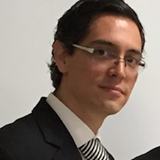 We have American trained retired doctors in Chapala and Ajijic who aren’t necessarily practicing and there are a couple of American trained chiropractors in the area who are very, very popular. We have Mexican dentists who were trained in the US, who are topnotch. The cost for dental procedures here is probably about one-fifth of what it is in the US.
We have American trained retired doctors in Chapala and Ajijic who aren’t necessarily practicing and there are a couple of American trained chiropractors in the area who are very, very popular. We have Mexican dentists who were trained in the US, who are topnotch. The cost for dental procedures here is probably about one-fifth of what it is in the US. We also have a little bit of medical tourism. People come down to see a doctor because the...
 We have American trained retired doctors in Chapala and Ajijic who aren’t necessarily practicing and there are a couple of American trained chiropractors in the area who are very, very popular. We have Mexican dentists who were trained in the US, who are topnotch. The cost for dental procedures here is probably about one-fifth of what it is in the US.
We have American trained retired doctors in Chapala and Ajijic who aren’t necessarily practicing and there are a couple of American trained chiropractors in the area who are very, very popular. We have Mexican dentists who were trained in the US, who are topnotch. The cost for dental procedures here is probably about one-fifth of what it is in the US. We also have a little bit of medical tourism. People come down to see a doctor because the doctors here are very inexpensive. Guadalajara (less than an hour away) has state of the art hospitals. We have doctors in Guadalajara who go to the US to practice and to operate. Our medical facilities here locally in Ajijic are more for emergencies than anything else. However, 45 minutes to the north in Guadalajara, there are great hospitals.
I don’t know what you get in the US and Canada because I’ve never been to a doctor in the US or Canada. However, I have a Canadian neighbor who has had 4 or 5 operations who insists on going to her doctor in Guadalajara, even though she could go to Canada because she has medical insurance in Canada and her care would be free there.
The cost of medical care here is a fraction of what it would be in the US.
There are good doctors and bad doctors in any country in the world. It’s just a matter of knowing who to go to and being able to select the good guys. Around here, the doctor’s reputation is very important. In our older community, we have a lot of experts on doctors.
(Dr. Leonardo Rafael Robles Sainz, urologist, Guadalajara, Mexico, pictured.)
Posted August 26, 2016
David Truly - Dr. David Truly Ph. D.
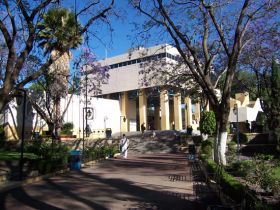 Yes, there are American-trained doctors in Chapala and Ajijic -- quite a few.
Yes, there are American-trained doctors in Chapala and Ajijic -- quite a few. Guadalajara, which is about 45 minutes away from Chapala and Ajijic, has the largest medical college group in all of Latin America. It has a long history of working with US and European doctors and professors and universities. Many of the hospitals in the Guadalajara area are certified internationally and work with major insurance carriers.
So with...
 Yes, there are American-trained doctors in Chapala and Ajijic -- quite a few.
Yes, there are American-trained doctors in Chapala and Ajijic -- quite a few. Guadalajara, which is about 45 minutes away from Chapala and Ajijic, has the largest medical college group in all of Latin America. It has a long history of working with US and European doctors and professors and universities. Many of the hospitals in the Guadalajara area are certified internationally and work with major insurance carriers.
So with that said, there are a lot of doctors here that have either done their pre-med down here in Mexico like at Autonoma University, UDG (University of Guadalajara) and some other medical colleges here, but they have done their residency training at schools in California and New York, etc. Most of the doctors have done continuing education in well-known universities like Harvard, Tulane, etc. So yes, there are American-trained doctors in this area that practice in the Ajijic and Chapala area and in Guadalajara.
(Biological Institute for the medical school of Autonoma University at the University of Guadalajara, Mexico, pictured.)
Posted September 7, 2016
Chris Gruenwald - Biencom Real Estate
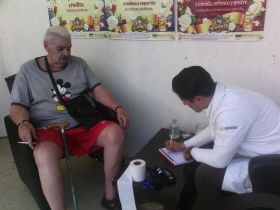 There are doctors here in Chapala and Ajijic that have studied in the US but there are more doctors here who have studied in Europe. Many doctors in Chapala and Ajijic take their residency in Germany or France. There are doctors who also train in the US but because of visa issues it is easier for them to go to places like Canada. So, yes, there are doctors here in Chapala and Ajijic that were trained overseas so the Mexican doctors are really good.
There are doctors here in Chapala and Ajijic that have studied in the US but there are more doctors here who have studied in Europe. Many doctors in Chapala and Ajijic take their residency in Germany or France. There are doctors who also train in the US but because of visa issues it is easier for them to go to places like Canada. So, yes, there are doctors here in Chapala and Ajijic that were trained overseas so the Mexican doctors are really good. ...
 There are doctors here in Chapala and Ajijic that have studied in the US but there are more doctors here who have studied in Europe. Many doctors in Chapala and Ajijic take their residency in Germany or France. There are doctors who also train in the US but because of visa issues it is easier for them to go to places like Canada. So, yes, there are doctors here in Chapala and Ajijic that were trained overseas so the Mexican doctors are really good.
There are doctors here in Chapala and Ajijic that have studied in the US but there are more doctors here who have studied in Europe. Many doctors in Chapala and Ajijic take their residency in Germany or France. There are doctors who also train in the US but because of visa issues it is easier for them to go to places like Canada. So, yes, there are doctors here in Chapala and Ajijic that were trained overseas so the Mexican doctors are really good. In my experience, the doctors in Chapala and Ajijic are just as well-trained as in they are in the United States, if not better trained. But you could get what you paid for. Also, here or anywhere, you should double check or reference doctors with someone who had experience with them because you could find all types of doctors here or anywhere.
(Dr. Jonathan Barragán seeing patients at the Foliatti Casino, Ajijic, Mexico, pictured.)
Posted September 16, 2016
Gabriel Varela, MD - Gabriel Varela - Neurosurgeon
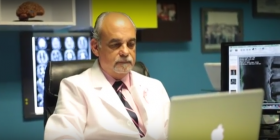 I believe there are several American trained doctors in Chapala and Ajijic. However, the level of training here in Mexico is the same as in the US. The reason I say this is because in the specialties like mine (neurosurgery), we go to conferences around the world and we interact with the American doctors all the time. In those interactions, we discuss the newest techniques and latest medical developments. From these interactions, I can see that there is no difference...
I believe there are several American trained doctors in Chapala and Ajijic. However, the level of training here in Mexico is the same as in the US. The reason I say this is because in the specialties like mine (neurosurgery), we go to conferences around the world and we interact with the American doctors all the time. In those interactions, we discuss the newest techniques and latest medical developments. From these interactions, I can see that there is no difference... I believe there are several American trained doctors in Chapala and Ajijic. However, the level of training here in Mexico is the same as in the US. The reason I say this is because in the specialties like mine (neurosurgery), we go to conferences around the world and we interact with the American doctors all the time. In those interactions, we discuss the newest techniques and latest medical developments. From these interactions, I can see that there is no difference in how we treat patients, follow up, etc. Also, after having done a surgical procedure on an American or Canadian patient, many times they tell me that they are very, very happy for the attention and technical expertise they received.
I believe there are several American trained doctors in Chapala and Ajijic. However, the level of training here in Mexico is the same as in the US. The reason I say this is because in the specialties like mine (neurosurgery), we go to conferences around the world and we interact with the American doctors all the time. In those interactions, we discuss the newest techniques and latest medical developments. From these interactions, I can see that there is no difference in how we treat patients, follow up, etc. Also, after having done a surgical procedure on an American or Canadian patient, many times they tell me that they are very, very happy for the attention and technical expertise they received. It’s very common when a patient tells me, “Wow, the medical care here is much better than in the US,” or, “Here is much better than Canada.”
In Guadalajara (about 40 minutes from here by car), they have the best medical technology. We have a gamma knife, for example. We have all the diagnostic tests like the PET Scans, MRIs, CT Scans. We have a center for radiotherapy. We have everything we need.
In addition, patients have told me many times that the kind of surgical procedure I performed on them here costs five or ten times more in the US. Also, the relationship between doctors and patients here is very calm, and very warm.
The work between the patient and doctors is warmer here. For example, after surgical procedures and the follow up, 80% of my patients become my very good friends. They often invite me to take food in their houses or in restaurants.
(Dr. Gabriel Varela in his office, Lake Chapala, Mexico, pictured.)
Posted November 9, 2016
Joan Silver
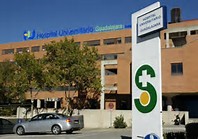 The majority of the doctors in Chapala and Ajijic have been educated in the United States and speak perfect English. Frequently you'll see advertisements that show where these doctors had medical training.
The majority of the doctors in Chapala and Ajijic have been educated in the United States and speak perfect English. Frequently you'll see advertisements that show where these doctors had medical training. We were once very suspicious and uncomfortable about the quality of medical care in Chapala and Ajijic. Then we were told about a story of an American who went to see a doctor here at Lake Chapala and was referred to a specialist in Guadalajara. The...
 The majority of the doctors in Chapala and Ajijic have been educated in the United States and speak perfect English. Frequently you'll see advertisements that show where these doctors had medical training.
The majority of the doctors in Chapala and Ajijic have been educated in the United States and speak perfect English. Frequently you'll see advertisements that show where these doctors had medical training. We were once very suspicious and uncomfortable about the quality of medical care in Chapala and Ajijic. Then we were told about a story of an American who went to see a doctor here at Lake Chapala and was referred to a specialist in Guadalajara. The specialist confirmed what the local doctor had said that he needed a heart operation.
The American said “Well, I don't feel comfortable having the heart operation done in Mexico. I'm going to fly back to Florida and have the operation done there”. On the operating table, the American finds out that the physician dong the surgery is the same specialist he had met in Guadalajara. Obviously, the heart operation costs more in the United States than it is in Mexico, even though it was performed by the same physician.
(Hospital Guadalajara, Mexico, pictured.)
Posted December 18, 2016
Flip Nicholson - Fenix Real estate
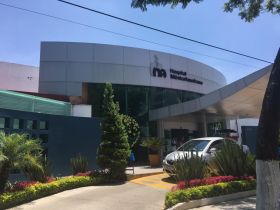 There are American-trained doctors in Chapala and Ajijic. There are people from California and other places who had some training or did some work for several years in other places. Many times I talk to a doctor who speaks perfect English and I would say, “How did you learn your English?” and they say they trained in California or in Texas.
There are American-trained doctors in Chapala and Ajijic. There are people from California and other places who had some training or did some work for several years in other places. Many times I talk to a doctor who speaks perfect English and I would say, “How did you learn your English?” and they say they trained in California or in Texas. The dentist whom I know goes back repeatedly for the latest technology education. They get a lot of...
 There are American-trained doctors in Chapala and Ajijic. There are people from California and other places who had some training or did some work for several years in other places. Many times I talk to a doctor who speaks perfect English and I would say, “How did you learn your English?” and they say they trained in California or in Texas.
There are American-trained doctors in Chapala and Ajijic. There are people from California and other places who had some training or did some work for several years in other places. Many times I talk to a doctor who speaks perfect English and I would say, “How did you learn your English?” and they say they trained in California or in Texas. The dentist whom I know goes back repeatedly for the latest technology education. They get a lot of that kind of training, and that’s why their English is perfect. Many doctors in training from the US whom I’ve talked to have had their training and internship in Guadalajara. Because you have to wait forever to get a spot in a US medical school, they go to Guadalajara where they can get a spot right now, and they end up falling in love with Guadalajara. Some of those people come back to practice here in the Chapala area.
Most of doctors here are Mexican nationals who have spent a lot of time north of the border, doing their training and learning, and they have learned English there. Then they come back and practice here in Chapala, so that’s the best of both worlds. I think the training of our local doctors here is better than the training in the US. The local doctors here seem to have that old-fashioned desire to make and keep people healthy.
We’ve seen this, and this is a common complaint when people move to Chapala. People say, “I’m so tired of the medical industry of the north because I feel like a piece of meat going through their show.” That means if there are six doors and you’re in one of them, sitting there and twirling your thumbs for 20 minutes after waiting an hour and a half to get to that point, a nurse comes in and takes your vitals, the doctor comes in and does a couple of “Ahems,” looks at your chart, writes a script for you, and he’s gone. What was his name again? You pay $100 or more than that because you pay insurance. An office visit in the US costs $100 bucks, and it’s overrated.
Don’t get me started on healthcare, because I’m telling you, it will drive you to Mexico in a hurry. The healthcare system in the US is just escalated to such proportions, but down here in Mexico, you can actually pay for your office visit with cash money and it costs next to nothing. A doctor will sit there on the visit with you as long as you need him to. In addition, the bedside manner of the doctors here is incredible. We’ve all been hospitalized in top-rate 5-star hospitals in Guadalajara with facilities that are clean, and with very friendly nurses who will get someone who speaks English if they don’t, just to make sure you’re comfortable, content, and happy with their services. It’s unbelievable.
(Hospital México Americano, Guadalajara, Mexico, pictured.)
Posted January 18, 2017
Percy Pinklebutt - Percy Pinklebutt Enteprises
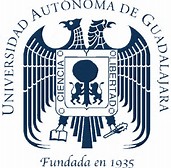 I would imagine some of the medical doctors in Chapala and Ajijic had training in the United States. However, a tremendous amount of American medical students come down to do med and pre-med here in Mexico. Medical education in places like Universidad de Guadalajara and Universidad Autónoma de Guadalajara is extremely good and well-recognized. For many American medical students, studying at a medical school in Mexico is more affordable than graduating from a medical school in...
I would imagine some of the medical doctors in Chapala and Ajijic had training in the United States. However, a tremendous amount of American medical students come down to do med and pre-med here in Mexico. Medical education in places like Universidad de Guadalajara and Universidad Autónoma de Guadalajara is extremely good and well-recognized. For many American medical students, studying at a medical school in Mexico is more affordable than graduating from a medical school in... I would imagine some of the medical doctors in Chapala and Ajijic had training in the United States. However, a tremendous amount of American medical students come down to do med and pre-med here in Mexico. Medical education in places like Universidad de Guadalajara and Universidad Autónoma de Guadalajara is extremely good and well-recognized. For many American medical students, studying at a medical school in Mexico is more affordable than graduating from a medical school in the US with a tremendous amount of debt.
I would imagine some of the medical doctors in Chapala and Ajijic had training in the United States. However, a tremendous amount of American medical students come down to do med and pre-med here in Mexico. Medical education in places like Universidad de Guadalajara and Universidad Autónoma de Guadalajara is extremely good and well-recognized. For many American medical students, studying at a medical school in Mexico is more affordable than graduating from a medical school in the US with a tremendous amount of debt. Mexico has IMSS (Instituto Mexicano del Seguro Social; a government institution concerned with pensions and healthcare), which is a medical system similar to Social Security in the US. It is similar to the NHS in the UK, which is medical care paid by your employer, so sometimes you get great service and sometimes you don’t.
In terms of paid / private doctors in Chapala and Ajijic, you have the full range from extremely well-trained and specialized to general doctors who work in villages, who will set bones for you and do the usual stuff. I feel like in the United States, medical care is much more focused around the making of money, whereas the medical care in Mexico is great and I have great confidence in it.
(Universidad Autónoma de Guadalajara , Guadalajara, Mexico, pictured.)
Posted February 11, 2017
Yolanda Martinez
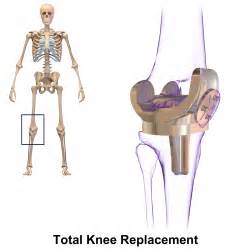 There are American-trained doctors in Chapala and Ajijic. I believe they are because our university, the Autonomous University of Guadalajara, I believe has an exchange program with the Indiana University in the United States.
There are American-trained doctors in Chapala and Ajijic. I believe they are because our university, the Autonomous University of Guadalajara, I believe has an exchange program with the Indiana University in the United States. I want to be a little more reserved for this question because sometimes the doctors in this area scare people a little too much. I understand the way American medicine is in the States. We’re so used to a system in being...
 There are American-trained doctors in Chapala and Ajijic. I believe they are because our university, the Autonomous University of Guadalajara, I believe has an exchange program with the Indiana University in the United States.
There are American-trained doctors in Chapala and Ajijic. I believe they are because our university, the Autonomous University of Guadalajara, I believe has an exchange program with the Indiana University in the United States. I want to be a little more reserved for this question because sometimes the doctors in this area scare people a little too much. I understand the way American medicine is in the States. We’re so used to a system in being a number and going in and having a checklist and not being able to see a doctor. Mexico we’re not that way. You could call your doctor at two in the morning and say, “My stomach is swollen. I think I have a appendicitis. "
“Mr. Smith, are you having a fever?”
“Yes.”
“I’m on my way.”
We have the culture that doctors want to care and want to help. It’s not an insurance case. That being said, I believe we do have American-trained doctors but I would really recommend to use Maskaras, a clinic we have here or look for Dr. Leon or Dr. Polo Ibarra. There are many doctors who speak English that are great Mexican doctors. The American process of doing things sometimes isn’t always the right way.
In Mexico, it’s a different way of doing things. We’re a different country that maybe what was working there will be a different way of doing things here and it could work for you. So when it comes to doctors, I would shop around to see how you feel comfortable with the doctors.
The level of care in general, in Chapala and Ajijic, from the doctors, if you shop around, is better than what you will find in the United States. You can even get a knee replacement in a very high-end facility in Guadalajara for what you would pay for your Medicare deductible in the States.
(Knee replacement, pictured.)
Posted July 28, 2017
Centeya - Radisson Blu Ajijic
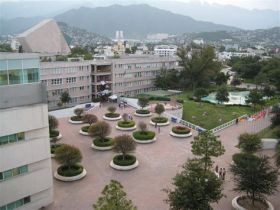 I know of a few American-trained doctors and dentists in Chapala and Ajijic. A lot of the doctors I know have actually come to Guadalajara to study, and after their medical training in the US, they come down to Chapala and Ajijic to get their masters in the Tecnológico de Monterrey or in the University of Guadalajara because they both offer really good education at a third of the cost.
I know of a few American-trained doctors and dentists in Chapala and Ajijic. A lot of the doctors I know have actually come to Guadalajara to study, and after their medical training in the US, they come down to Chapala and Ajijic to get their masters in the Tecnológico de Monterrey or in the University of Guadalajara because they both offer really good education at a third of the cost. A lot of the doctors find Lake Chapala to be a great community...
 I know of a few American-trained doctors and dentists in Chapala and Ajijic. A lot of the doctors I know have actually come to Guadalajara to study, and after their medical training in the US, they come down to Chapala and Ajijic to get their masters in the Tecnológico de Monterrey or in the University of Guadalajara because they both offer really good education at a third of the cost.
I know of a few American-trained doctors and dentists in Chapala and Ajijic. A lot of the doctors I know have actually come to Guadalajara to study, and after their medical training in the US, they come down to Chapala and Ajijic to get their masters in the Tecnológico de Monterrey or in the University of Guadalajara because they both offer really good education at a third of the cost. A lot of the doctors find Lake Chapala to be a great community where they can offer their services because there are so many expats living here. I know these doctors in Chapala just from being here my whole life.
The quality of the healthcare here in Chapala and Ajijic really depends on the doctor. Healthcare here in Chapala and Ajijic is a lot more accessible as far as the cost goes. Another good thing about healthcare here is you don’t have to wait for three to four hours to see a doctor. The doctors here in Chapala and Ajijic will see you right away, especially if you have an appointment. If you have more serious illnesses, you’ll be able to see doctors here who will then refer you to the doctors in Guadalajara.
Guadalajara offers almost world-class medical care. There are fantastic hospitals in Guadalajara such as Hospital Real San Jose and Puerta de Hierro Medical Center, which is located in a very famous upscale community in Guadalajara. Medical care in Guadalajara is almost the same caliber as you would expect in the average hospital in the United States.
(Tecnológico de Monterrey campus, Monterrey, Mexico, pictured.)
Posted April 24, 2018
Chuck Bolotin - Best Mexico Movers
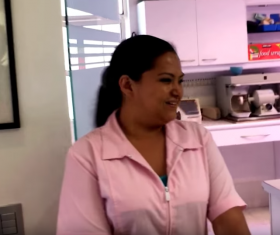 Quite a few of the doctors (and dentists, for that matter) in the Ajijic / Lake Chapala area have had either some training, or all their training in the US. This is one of the biggest reasons many of the medical professionals here speak either some, or extremely good English. There is also a very good Mexican medical school in Guadalajara attended by many Americans who become doctors in the US.
Quite a few of the doctors (and dentists, for that matter) in the Ajijic / Lake Chapala area have had either some training, or all their training in the US. This is one of the biggest reasons many of the medical professionals here speak either some, or extremely good English. There is also a very good Mexican medical school in Guadalajara attended by many Americans who become doctors in the US.It is always a good idea, and even more so in Mexico, to not just assume that all...
 Quite a few of the doctors (and dentists, for that matter) in the Ajijic / Lake Chapala area have had either some training, or all their training in the US. This is one of the biggest reasons many of the medical professionals here speak either some, or extremely good English. There is also a very good Mexican medical school in Guadalajara attended by many Americans who become doctors in the US.
Quite a few of the doctors (and dentists, for that matter) in the Ajijic / Lake Chapala area have had either some training, or all their training in the US. This is one of the biggest reasons many of the medical professionals here speak either some, or extremely good English. There is also a very good Mexican medical school in Guadalajara attended by many Americans who become doctors in the US.It is always a good idea, and even more so in Mexico, to not just assume that all doctors are equally good. You can probably find some very inexpensive doctors here in the Ajijic area that aren’t so great. However, if you stick to the healthcare system that most expats would use (as opposed to the public one or one that is extremely inexpensive or for poor Mexicans), most of the doctors you will encounter have the training you would expect in the US and some have more.
Please remember that the Ajijic / Lake Chapala area is not a big urban area and much of the non-expat population is not wealthy enough to afford first-class healthcare. Because of this, don’t expect a first-rate 50 bed hospital; the area simply doesn’t warrant one. There are some full-time, high quality physicians practicing here in the Ajijic area, and there are many more whose primary practice is in the big city of Guadalajara (less than an hour away and an area that supports many 50-bed first-rate hospitals) and who come to the Ajijic area perhaps once or twice per week.
Given how very inexpensive the healthcare is here in the Ajijic / Lake Chapala area, you can very much afford to go to the very best, and when you do, you will find extremely well-trained doctors on par with what you would expect in the US.
Here’s a video we did with Dr. Varela, a neurological surgeon who treated me. I was very satisfied with the care I received.
Interested in moving to the Ajijic / Lake Chapala area? Try Best Mexico Movers.
Posted August 4, 2018



.png)